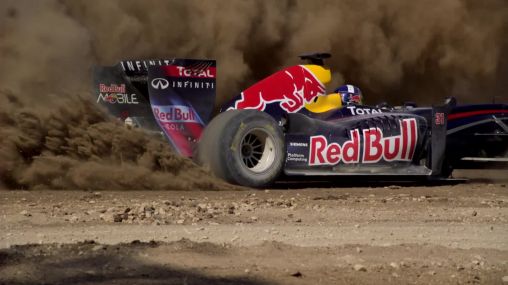How far has safety come in Formula 1?
Posted by admin at 10 July 2013, at 14 : 11 PM

While safety hasn’t always been a priority for Formula 1, it’s now an established part of a sport whose international appeal is spread across multiple continents and large amounts of grand prix merchandise. Precautions are taken for everything from car design through to rider and track safety. Upgrades are made every year to safety regulations, while advances in car technology mean that it’s possible to reduce the risk of serious accidents. Although there will always be a certain degree of risk within Formula 1, the sport has gradually improved its safety.
The initial years of Formula 1 racing in the 1950s did not see a strong emphasis on safety. Loose rules and regulations were applied to the use of different engines, turbocharging, and the condition of different tracks and circuits. Driver helmets were introduced in 1952, while efforts were made by the end of the decade to standardise engines, to increase padding and car safety, as well as to switch to commercial petrol to reduce the risk of fire and explosions.
More formal safety measures were developed throughout the 1960s and 1970s, as Formula 1 and its governing body the FIA worked to limit driver and spectator deaths. Some of the major safety changes made to the sport included the further standardisation of engine sizes, as well as the introduction of roll bars, improved seatbelts, and fire resistant suits for drivers. Other improvements included better flag signalling at tracks, as well as enhanced aerodynamics to prevent cars from easily overturning.
Persistent accidents and track problems saw Formula 1 gradually incorporate strict rules over what circuits could include in terms of track width and
corners. During the 1970s, Formula 1 circuits introduced smaller tracks, and more safely designed barriers and pit lanes. Medical improvements were also made, which involved enabling better access for emergency services to drivers.
Safety for Formula 1 during the 1980s and 1990s was affected by the rapid development of new car technologies. Turbo charging cars became common in the 1980s, with improvements in carbon fibre tech and engines doing little to overcome the fact that cars were now driving at higher speeds. Better medical services and helicopter lifts from tracks also couldn’t prevent tragedies like the death of Ayrton Senna in 1994. Narrower tracks, and computer aided steering and braking in the 1990s did, at least, make cars more efficient at preventing accidents.
More recently, safety in Formula 1 has been improved through an annual commitment to identifying design faults and potential risks at circuits. Drivers can benefit from cars that have been fine tuned to limit the risk of fires and control failures. The potential for acceleration and speed of Formula 1’s current V8 2.4 litre engines is also being adjusted, with new 1.6 litre turbocharged V6 engines being introduced in the next few years as a way of cutting emissions and regulating car acceleration and handling.





